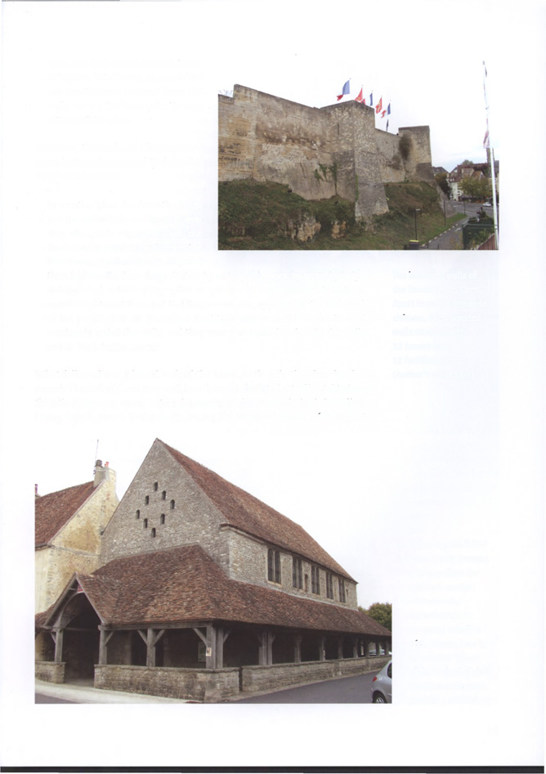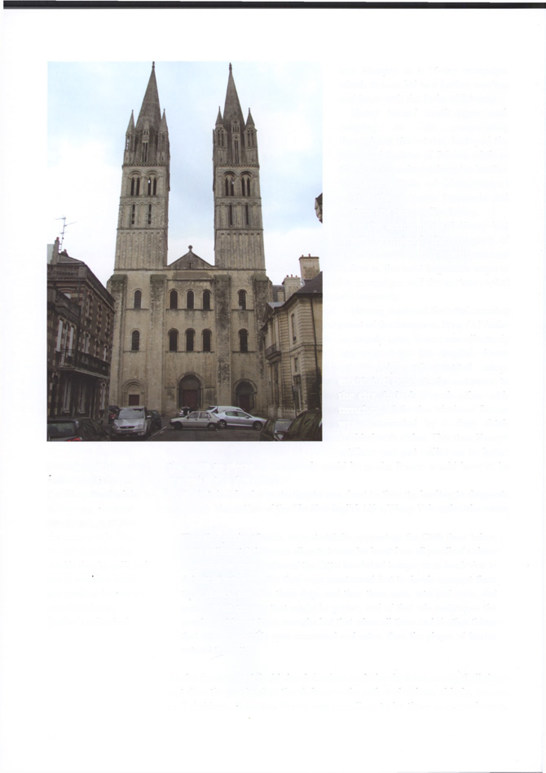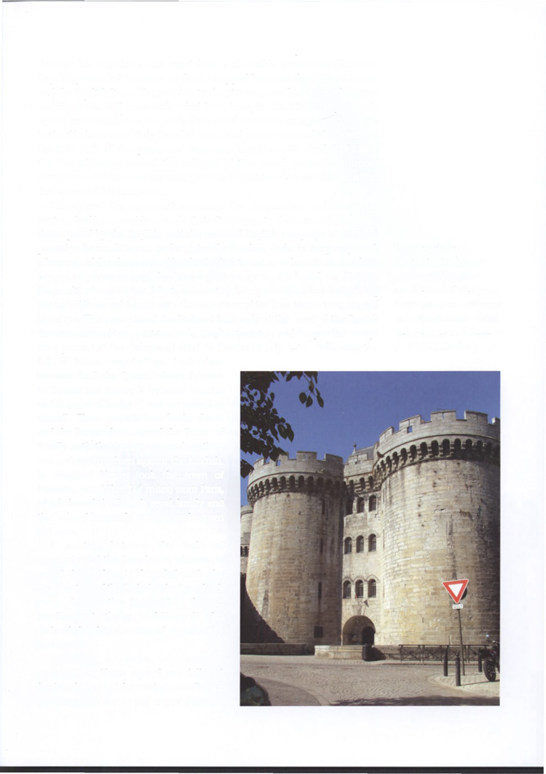Henry V: The Background, Strategies, Tactics and Battlefield Experiences of the Greatest Commanders of History Paperback (14 page)
Authors: Marcus Cowper
Tags: #Military History - Medieval

for much longer. However,
a full assault was ordered on 4 September. Henry again split his forces, with
Henry offered generous
a portion under the Duke of Clarence on the far side of the town, with
terms and the demoralized
Henry and his men on the near side. The fighting was fierce as the defenders
garrison surrendered.
sought to deny the English their walls, as described in the
The First English
(Author's collection)
Life of Henry V:
The Englishmen raysed there ladders
to the walls, and assayled to skale
them wth all the diligence they
coulde; but many of them were
foorwth cast backwards into the ditch,
and there laders wth them. Then on all
parts the Englishmen assended the
walls and foorthwth fought right
manly, and laboured right sore to gett
the Towne; and they of the Towne
eneuored them as busily, and not wth
lesse laboure, by shott and castinge of
stones, by sheddinge of skaldinge
water and boylinge pich and oyle
40


upon the Englishmen to resist theire
enterprise; but allwaies, as one ladder
was ouerthrowne and cast from the
walls, many other more ardently were
sett upp in his place.
However, the Duke of Clarence had
more luck and managed to force his
way into the town:
In an other place farr from the Kinge
was the noble Duke of Clarence, wch
also wth greate vigor assaulted the
Towne on his part: whose strength the
Frenchmen, neither by the helpe of
there highe walls, there deepe ditches, by castinge of stones, by shott, by helpe
The imposing walls of
of there whot water, boylinge pitch or oyle, nor by no manner of strength or
the Ducal Castle, Caen.
pollicie might resist them, but that they were so sore oppressed by the Duke and
Apart from the immense
of his people, wch in maruelous multitude and incredible audacitie and
chateau, Caen boasted
manhoode scaled the walls: and they were constrained to forsake the walls
walls studded with
and to flye into the Towne.
32 towers and
12 fortified gates.
What followed was a brutal sack of the town, with only the churches being (Author's collection)
spared. The sack of Caen may well have been a calculated act of brutality to cow
the other Norman towns into submission, and it certainly had this effect as
Henry rapidly struck to the south, taking the towns of Exmes, Sees, Argentan
Following the fall of
Caen, Henry pressed
southwards to the
southern borders
of Normandy,
capturing towns
en route including
Sees. Shown here is
the chapter house
of the cathedral that
dominates the town.
(Author's collection)
41


and Alengon in a 15-day campaign,
which in turn led to a further meeting
and truce with the Duke of Brittany.
Henry turned north again and,
carrying on his campaigning
throughout the winter, besieged the
town and fortress of Falaise, while at
the same time dispatching his brother
Humphrey, Duke of Gloucester, to
subdue the Cotentin Peninsula and
capture the port of Cherbourg.
By the spring of 1418 Henry had
largely completed the conquest of
lower Normandy and was free to turn
to Rouen, the most important target of
his campaigns and the ancient capital
of Normandy.
Having captured the vital crossing
point of the Somme at Pont de I'Arche
on 20 July 1418, Rouen was effectively
surrounded by the English forces
on 30 July, with fortified camps
established opposite the entrances to
the city, linked to each other with
trenches, while the whole of Rouen
was surrounded by a deep ditch
studded with stakes. This time Henry's
artillery was not sufficient to batter
The towers of the
the walls to pieces so an assault could be made; Rouen would have to be
Eglise Saint-Etienne,
starved into submission.
the abbey church of the
By October food was starting to run short in the city, leading to desperate
Abbaye-aux-Hommes
measures. The author of the
The First English Life of Henry V
describes the scene:
constructed by William
the Conqueror in Caen.
Thus this prudent Prince, more streightlie oppressinge the Cittie them tofore,
In 1417 the abbey lay
made sufficient defences on all parts to saue his hoast from all perrills of sodaine
outside the city walls and
inuasions; by means whereof the Cittie inualished hunger, in so much that in
was to provide a handy
default of other meattes they were constrained first to devide amongst them
gun platform for Henry's
there horses, and also there dogs, and then there catts, ratts and myse, and
assaulting forces.
generally all thinges that might be gotten; and of that vile sustenance the
(Author's collection)
people coulde not haue enoughe but that when all these and al other things
that were comestible were consumed and eaten, then the plague of famine
entered the Cittie.
As the famine took hold the defenders took the decision to expel all those
not directly involved in the defence - the sick and infirm, elderly, women
and children. However, Henry was unwilling to let these non-combatants
42


through his siege lines and, apart from a charitable gesture on Christmas
Day, they were left to starve to death, trapped between the walls of Rouen
and the English lines. The position in the city was now becoming desperate
and there was still no French relief force in sight. On 13 January the city
agreed to surrender on the 19th if no relief force was in sight and, on the
19th, the keys were duly handed over, and Henry entered the town on
the 20th with all due pomp and ceremony. Much as with the fall of Caen,
the loss of Rouen caused the collapse of the French position in upper
Normandy, before an event took place in September that would transform
the nature of the campaign.
Throughout the Agincourt campaign the Burgundian and Armagnac
factions had been unable to settle their differences in the face of the external
threat posed by the English, and the renewed English campaign of 1417-19
proved to be no different. In fact John the Fearless, Duke of Burgundy, took Henry's ultimate
advantage of the chaos caused by the English invasion to launch an attack on destination in his push Armagnac possessions in the Seine region in spring 1418 and, on 29 May, southwards from Caen
Burgundian forces captured Paris, massacring Armagnac supporters and gaining was the town of Alengon, control of the royal family with the exception of the Dauphin who managed which put up no resistance to escape. This now placed the Duke of Burgundy at the head of the French to his forces despite being Government and in opposition to the English invasion, and Burgundian troops well prepared for a siege.
were present at the defence of Pont de I'Arche in July 1418. Following the (Author's collection)
fall of Rouen negotiations took place
between the Duke, Queen Isabeau, Princess
Katherine and Henry V between Mantes
and Pontoise (Charles VI was too unwell to
attend). These negotiations broke down
and the Burgundians signed the Treaty of
Pouilly with the Armagnacs, ending their
war and uniting them against the English.
In response Henry took the town of
Pontoise, just 27km (17 miles) from Paris,
which forced the French royal family and
the Duke of Burgundy to move to the town